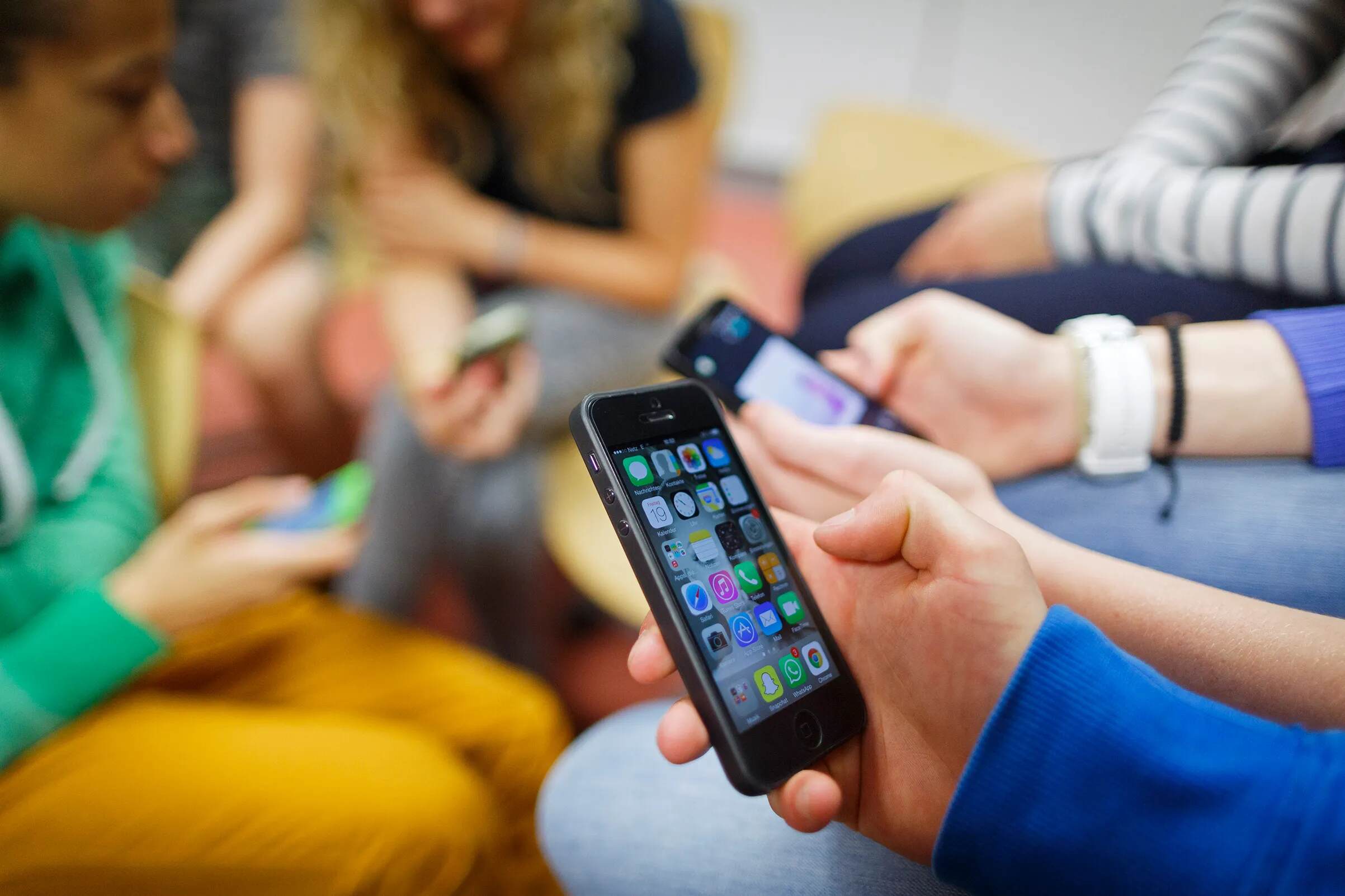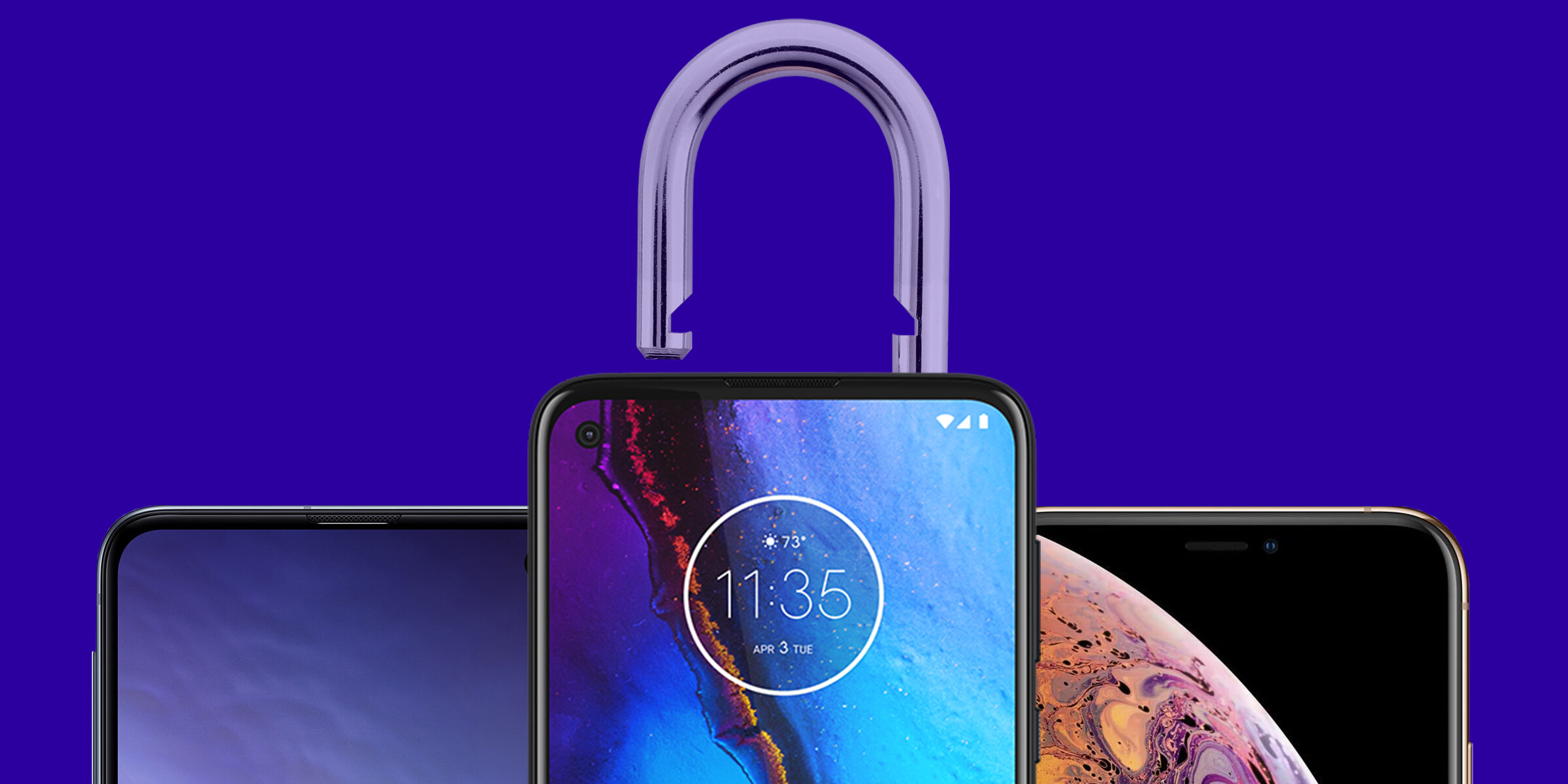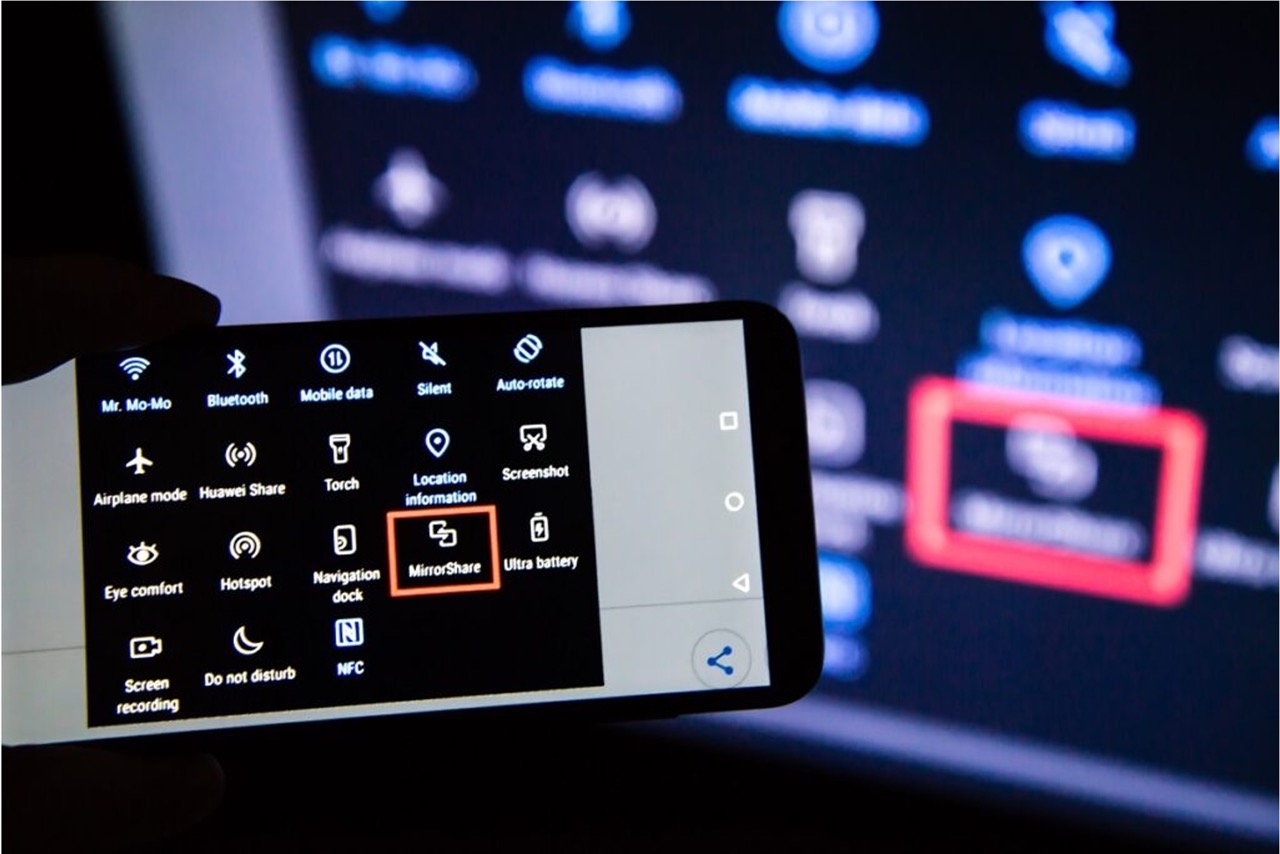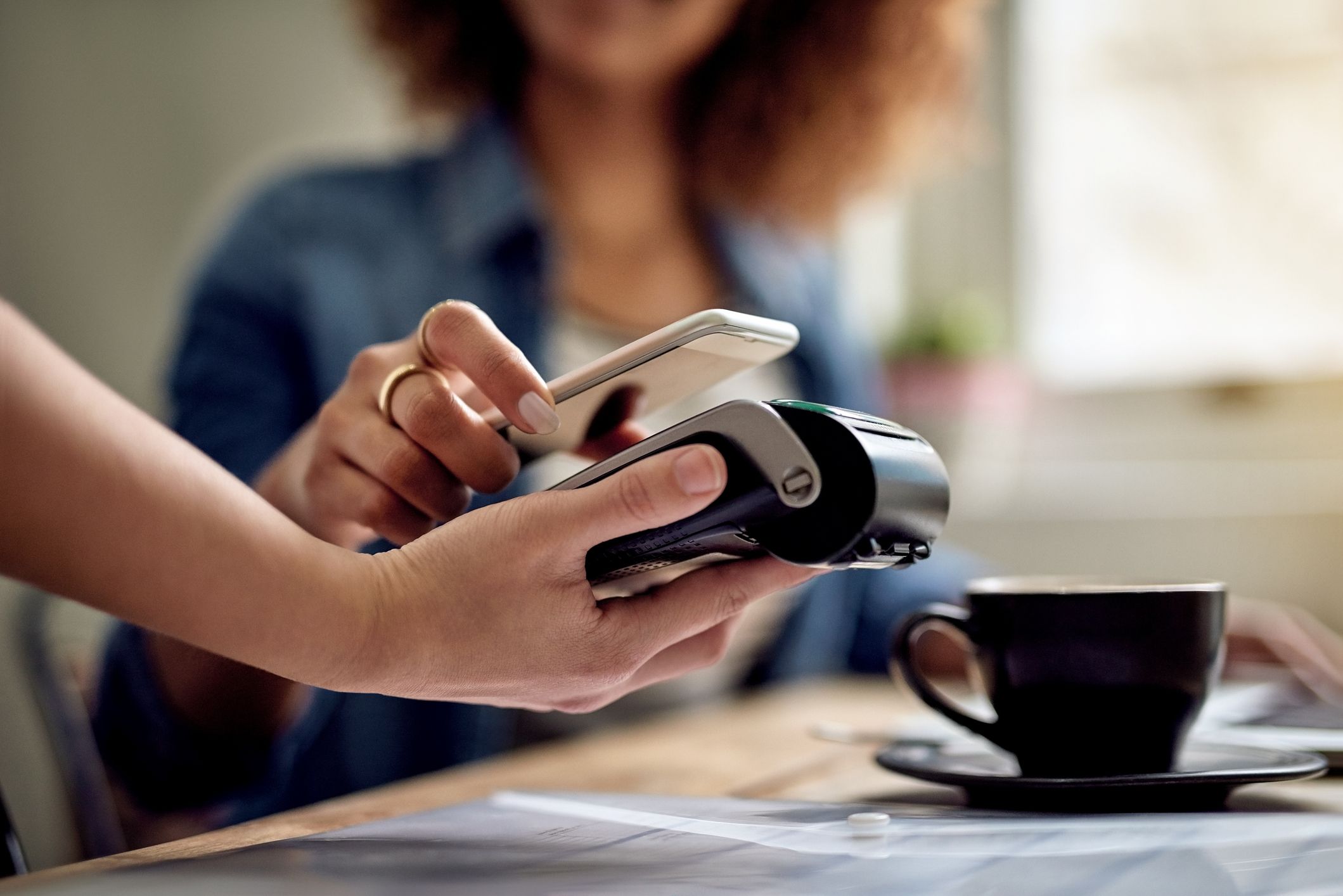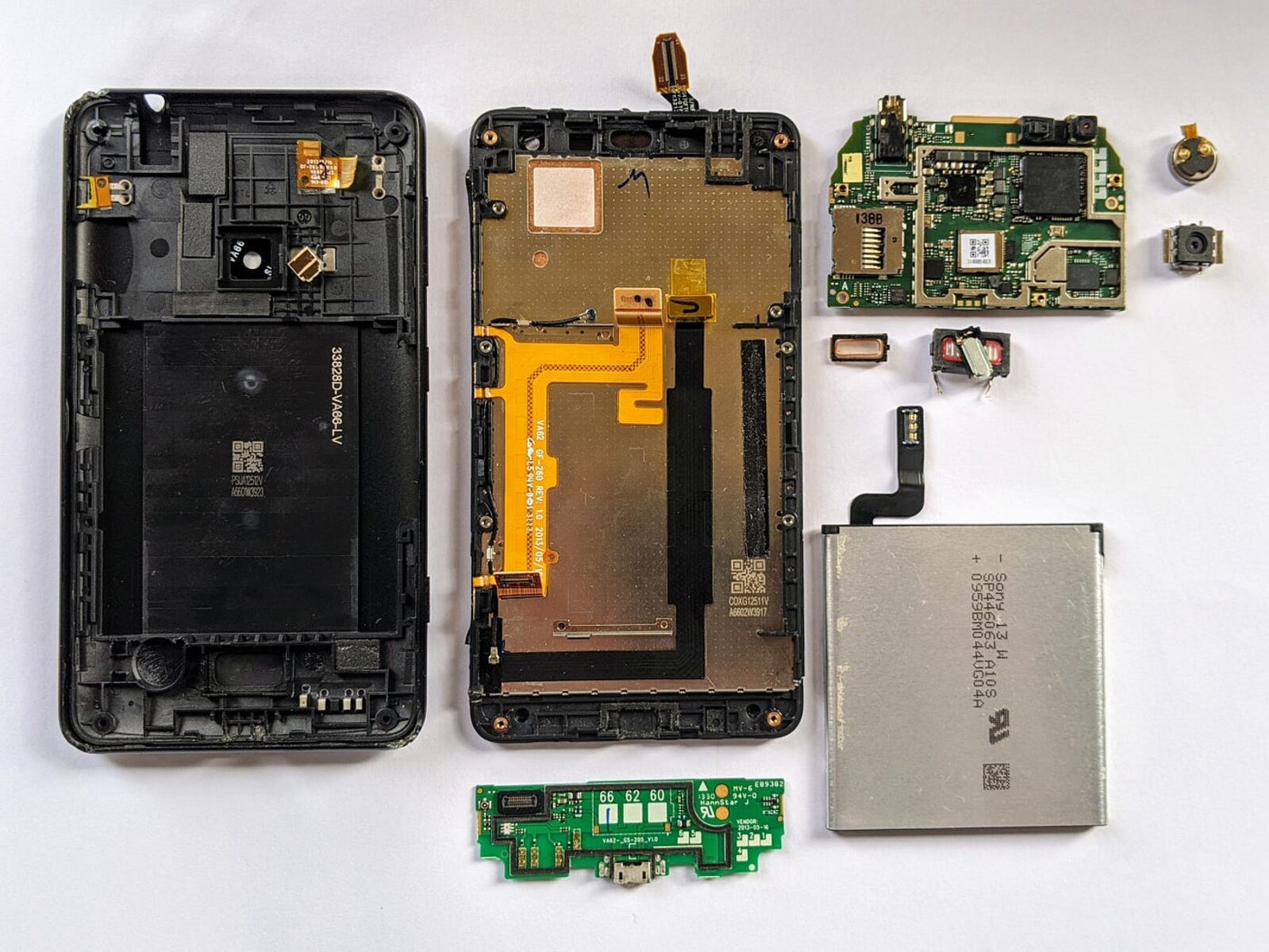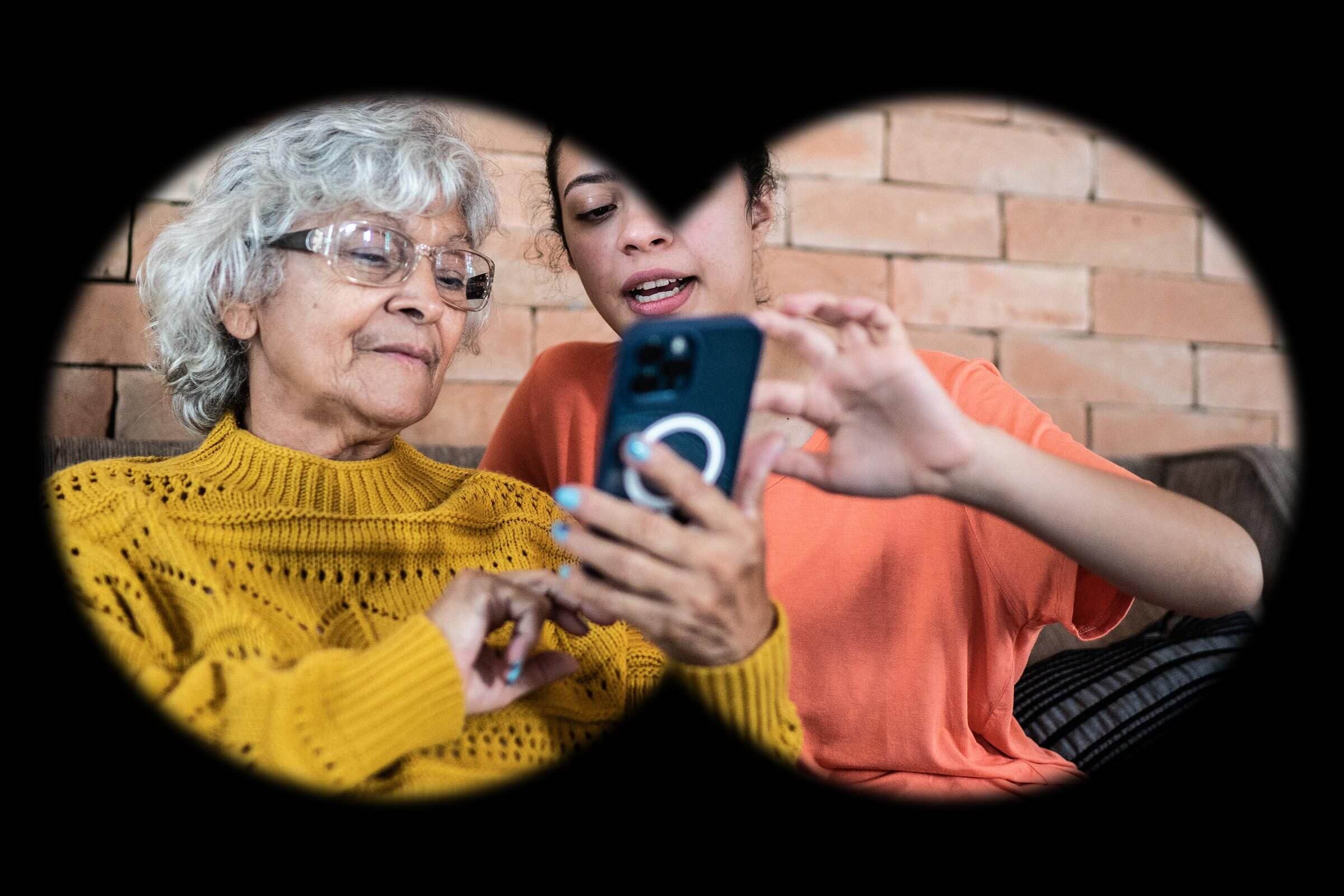Introduction
Smartphones have become an integral part of our daily lives, offering a multitude of features and functionalities that keep us connected and entertained. Whether you’re a tech-savvy individual or just beginning to explore the world of smartphones, understanding how to use these devices effectively can greatly enhance your digital experience. In this guide, we will provide you with an overview of essential smartphone functions and features, helping you make the most out of your device.
Modern smartphones not only allow us to make calls and send messages, but they also serve as a portable computer, personal assistant, and media hub. From navigating through the user interface to managing apps and accessing the internet, each aspect of using a smartphone presents unique opportunities and challenges. By mastering these functionalities, you can streamline your daily tasks, stay connected with loved ones, and explore the vast world of digital content.
It’s important to note that smartphones come in various operating systems such as iOS and Android, each with its own set of features and interfaces. While this guide will provide general instructions that are applicable to most smartphones, there may be slight variations between different platforms. However, the fundamental concepts and principles remain the same, allowing you to adapt the knowledge gained from this guide to your specific device.
Whether you’re a beginner or an experienced smartphone user looking to expand your knowledge, this guide will take you through the essential features and functions of a smartphone and empower you to make the most out of your device. So, let’s dive in and discover the wonders of the smartphone world together!
Getting Started
When you first get your new smartphone, the excitement of exploring its features and capabilities can be overwhelming. To ensure a smooth and hassle-free experience, let’s begin by covering the basics of getting started with your smartphone.
1.1 Unboxing and Setup
Start by carefully unboxing your smartphone and checking the contents of the package. Along with the smartphone itself, you should find a charger, USB cable, and user manual. Make sure to keep these items in a safe place.
Next, find the power button – usually located on the side or top of the device – and press and hold it to turn on your smartphone. Follow the on-screen prompts to set your language, country, and connect to a Wi-Fi network.
1.2 Creating Accounts
Once your smartphone is powered on, you’ll need to create or sign in to your Google or Apple ID. These accounts are essential for accessing various services, such as downloading apps from the respective app stores and syncing your data across devices.
1.3 Navigating the User Interface
Take some time to familiarize yourself with the user interface of your smartphone. On most devices, you’ll find a home screen where you can place app icons, widgets, and shortcuts. Swiping left or right will allow you to access additional home screens, while swiping down will reveal the notification panel.
At the bottom of the screen, you’ll typically find a navigation bar or gesture-based navigation options. These buttons or gestures will let you navigate between apps, go back to previous screens, and access the app switcher.
1.4 Setting Up Security
To protect your smartphone and personal data, it’s crucial to set up security measures. This can include setting a PIN, pattern, or biometric authentication method such as fingerprint or facial recognition. Make sure to enable these security features in the settings of your device.
Remember to regularly update your smartphone’s software to ensure you have the latest security patches and bug fixes. This can typically be done in the settings menu under the “Software Update” or “System Update” section.
Now that you have successfully set up your smartphone and acquainted yourself with its basic features, you’re ready to explore the countless possibilities it offers. In the next section, we will delve into the various ways to navigate your smartphone’s user interface and customize it to suit your preferences.
Navigating Your Smartphone
Once you have set up your smartphone, it’s important to understand how to navigate through its user interface and access the different features and functions. In this section, we will explore the various methods of navigating your smartphone effectively.
2.1 Home Screen and App Drawer
The home screen serves as the main hub for accessing your apps and information. By default, the home screen displays app icons arranged in a grid pattern. You can customize the layout, add widgets, and set wallpapers to personalize your home screen.
To open an app, simply tap its icon on the home screen. If you can’t find an app on the home screen, swipe up or look for an icon labeled “App Drawer.” The app drawer contains a comprehensive list of all the apps installed on your device.
2.2 App Switching
Android devices often have a dedicated button or gesture for accessing the app switcher. On iOS devices, you can access the app switcher by swiping up from the bottom of the screen and holding for a moment. The app switcher allows you to quickly switch between recently used apps.
2.3 Notification Panel and Quick Settings
Swipe down from the top of the screen to access the notification panel. Here, you’ll find notifications from various apps, including messages, emails, and updates. You can tap on a notification to open the corresponding app or swipe it away to dismiss it.
On most smartphones, the notification panel also includes quick settings. These shortcuts allow you to toggle features such as Wi-Fi, Bluetooth, airplane mode, and screen brightness without navigating through the settings menu.
2.4 Back and Home Buttons (Android)
Android devices typically have virtual or physical back and home buttons located at the bottom of the screen. The back button lets you navigate back to the previous screen or app, while the home button takes you back to the home screen.
If your Android device uses gesture navigation, swiping from the sides or bottom of the screen can replace the back button. Consult your device’s user manual or settings to learn more about the navigation options available to you.
2.5 Control Center (iOS)
On iOS devices, you can access the Control Center by swiping down from the top-right corner of the screen (iPhone X and newer) or swiping up from the bottom of the screen (iPhone 8 and older). The Control Center provides quick access to commonly used settings and features, such as Wi-Fi, Bluetooth, and brightness control.
With these navigation techniques in mind, you can confidently explore your smartphone’s interface and effortlessly access the apps and features you need. In the next section, we will delve into customization options, allowing you to personalize your smartphone according to your preferences.
Customizing Your Smartphone
One of the great advantages of owning a smartphone is the ability to customize it to suit your personal preferences and style. In this section, we will explore the different ways you can customize your smartphone’s appearance and functionality.
3.1 Wallpapers and Themes
Personalize your smartphone by changing its wallpaper. You can choose from a variety of pre-installed wallpapers or use your own photos. Simply navigate to the settings and look for the “Wallpaper” or “Display” option to set a new wallpaper.
Some smartphones also offer theme options that change the overall look and feel of the interface. Themes can include different icon styles, fonts, and color schemes. Explore the theme settings of your smartphone to find a style that resonates with you.
3.2 App Icons and Widgets
Add a touch of personalization by customizing your app icons and widgets. Many launchers, available on both Android and iOS, allow you to change the appearance of app icons and add useful widgets to your home screen. Look for launcher apps in the respective app stores to explore these customization options.
3.3 Notification Settings
Tailor your smartphone’s notification settings to suit your needs. You can choose which apps can send you notifications, control the sounds and vibrations, and even set priority levels for certain alerts. Navigate to the settings menu and look for the “Notifications” or “Sounds & Notifications” section to configure your preferences.
3.4 Gestures and Shortcuts
To enhance your smartphone experience, take advantage of the gestures and shortcuts available. Many smartphones offer gesture-based navigation options, allowing you to swipe or double-tap to perform certain actions. You can also set up custom shortcuts for quick access to frequently used apps or settings.
3.5 Accessibility Options
If you have specific accessibility needs, explore the accessibility settings of your smartphone. These options include features such as larger text, color filters, magnification gestures, and voice control. Customizing these settings can greatly improve the usability of your device.
With the ability to personalize your smartphone, you can create a device that reflects your unique style and functionality preferences. Take the time to explore the customization options available to you and make your smartphone truly yours. In the next section, we will discuss app management and organization, allowing you to keep your smartphone clutter-free and easy to navigate.
Managing Apps
As you use your smartphone, you’ll likely accumulate a variety of apps that serve different purposes and provide different functionalities. It’s essential to manage these apps effectively to keep your device organized and ensure smooth performance. In this section, we will explore various strategies for managing your apps.
4.1 Installing and Uninstalling Apps
To install new apps, visit the app store on your smartphone – Google Play Store for Android or App Store for iOS. Search for the app you want and tap the “Install” or “Get” button to download and install it on your device.
If you find that you no longer need certain apps or want to free up storage space, uninstalling them is a straightforward process. On most smartphones, you can long-press on an app icon and select the option to uninstall or delete it. Alternatively, you can go to the app settings in the system settings menu and uninstall apps from there.
4.2 Organizing Apps
Having a cluttered home screen can make it difficult to find and access the apps you frequently use. Take advantage of folder organization to keep your apps organized. To create a folder, drag one app icon onto another. You can then customize the folder’s name and add additional apps by dragging them into the folder.
Consider organizing your apps into categories, such as “Social Media,” “Productivity,” or “Entertainment,” to make locating them easier. You can also rearrange the position of app icons on your home screen by long-pressing them and dragging them to the desired location.
4.3 App Permissions
It’s important to review the permissions requested by apps before installing them. Permissions can include access to your contacts, location, camera, and more. To view and manage app permissions, go to the app settings menu and look for the “App Permissions” or “Permissions” section. Disable permissions that you are uncomfortable granting to ensure your privacy and security.
4.4 App Updates
Keeping your apps up to date is crucial for performance improvements and security enhancements. Enable automatic app updates in the app store settings to ensure that your apps receive the latest updates without manual intervention. However, if you prefer to have more control over app updates, you can manually update them by visiting the app store and checking for available updates.
Managing your apps efficiently will not only save you time but also contribute to a seamless and organized smartphone experience. Take the time to periodically review and optimize your app collection to ensure that your device operates at its best. In the next section, we will explore how to leverage your smartphone’s camera to capture memorable moments and unleash your creativity.
Using the Camera
One of the standout features of smartphones is their ability to capture high-quality photos and videos on the go. Whether you’re a photography enthusiast or simply want to document special moments, understanding how to use your smartphone’s camera can help you take stunning photos and videos. In this section, we will explore various tips and techniques for mastering your smartphone’s camera.
5.1 Basic Camera Functions
Start by familiarizing yourself with the basic functions of your smartphone’s camera app. On most devices, you can access the camera by opening the app directly from the home screen or by swiping left or right on the lock screen.
The camera app typically includes features like switching between the front and rear cameras, adjusting the exposure, and tapping on the screen to focus on a specific subject. Take some time to experiment with these functions to understand how they affect your photos.
5.2 Composition and Framing
When taking a photo, consider the composition and framing of the image. Think about the rule of thirds, where you imagine your frame divided into nine equal parts and place points of interest along these lines or at their intersections. This can create a more visually appealing and balanced composition.
Experiment with different angles and perspectives to add depth and interest to your photos. Don’t be afraid to get close to your subject for detail shots or step back to capture the entire scene.
5.3 Lighting and Exposure
The lighting conditions play a crucial role in capturing a great photo. When shooting in low light, consider using the flash or utilizing the available natural light sources. Avoid using the zoom function, as it can lead to a loss of image quality. Instead, physically move closer to your subject for a better shot.
Adjusting the exposure can help you compensate for bright or dark scenes. Most camera apps allow you to tap on different areas of the screen to adjust the exposure for that specific area.
5.4 Editing and Enhancing Photos
After capturing your photos, take advantage of the editing features provided by your smartphone’s camera app or download a dedicated photo editing app. Adjust the brightness, contrast, saturation, and sharpness to enhance the visual appeal of your photos. Crop, rotate, and apply filters to further customize your images.
5.5 Exploring Additional Features
Many smartphone cameras offer additional features such as portrait mode, panorama, night mode, and time-lapse. Explore these features in your camera app to experiment with different shooting styles and capture unique moments.
By understanding the features and capabilities of your smartphone’s camera, you can unleash your creativity and capture exceptional photos and videos. Practice regularly and experiment with different settings to improve your skills. In the next section, we will discuss essential functions for making calls and sending messages on your smartphone.
Making Calls and Sending Messages
While smartphones offer a myriad of features, their primary purpose remains making calls and sending messages. In this section, we will explore the essential functions for making and receiving calls, as well as sending and managing various types of messages on your smartphone.
6.1 Making Phone Calls
To make a phone call, locate the Phone app on your smartphone’s home screen or app drawer. Open the app and enter the phone number you wish to call using the keypad. Alternatively, you can choose a contact from your address book by tapping on the appropriate entry.
Once the number is entered or the contact is selected, press the call button to initiate the call. During the call, you can adjust the call volume, mute your microphone, and switch between the speakerphone and earpiece modes.
6.2 Receiving Phone Calls
When you receive an incoming call, your smartphone will display a notification on the screen. To answer the call, swipe on the screen or press the answer button. If you are unable to answer the call or wish to send it to voicemail, swipe the screen or press the decline button.
During a call, you can mute your microphone, switch to the speakerphone, or hold the call if you need to attend to another task. If you receive a second incoming call while on a call, you can choose to hold the current call and switch to the new one or decline the new call.
6.3 Sending Text Messages
To send a text message, open the Messaging or SMS app on your smartphone. Tap on the compose button, usually represented by a pencil or message icon, and enter the recipient’s phone number or select a contact from your address book.
Once the recipient is selected, type your message in the text box provided. Many messaging apps also support additional features such as attaching images, videos, or audio recordings. After composing your message, tap the send button to deliver it to the recipient.
6.4 Managing Other Messaging Apps
In addition to traditional text messaging, smartphones offer various messaging apps such as WhatsApp, Facebook Messenger, and Telegram. These apps allow you to send messages, make voice and video calls, and share media with your contacts.
To use these apps, download and install them from the respective app stores. Sign in or create an account, and then add your contacts to start messaging or calling them. Each app may have its own unique interface and features, so take some time to explore the settings and customization options.
With the ability to make phone calls and send various types of messages, your smartphone keeps you connected to your friends, family, and colleagues. Practice these functions regularly to become proficient and stay connected wherever you go. In the next section, we will discuss connecting to Wi-Fi and mobile data to access the internet and other online services.
Connecting to Wi-Fi and Mobile Data
Connecting to Wi-Fi and mobile data networks is essential for accessing the internet, browsing websites, using online services, and downloading apps on your smartphone. In this section, we will explore the different methods of connecting to Wi-Fi networks and utilizing mobile data.
7.1 Connecting to Wi-Fi Networks
To connect to a Wi-Fi network, open the settings menu on your smartphone and look for the “Wi-Fi” option. Tap on it to view a list of available Wi-Fi networks in your vicinity. Select the network you want to connect to and enter the password if required.
Once connected, your smartphone will remember the network and automatically connect to it whenever it’s in range. This is especially useful for home, work, or frequently visited locations where you have access to a trusted Wi-Fi connection.
7.2 Managing Wi-Fi Settings
In the Wi-Fi settings menu, you can also customize various options. You can choose to enable or disable Wi-Fi, forget saved networks, and configure advanced settings such as IP address assignment or network preferences.
7.3 Utilizing Mobile Data
When Wi-Fi is not available or you’re on the go, you can rely on mobile data networks to stay connected. Make sure your smartphone has a data plan and cellular service enabled. Access the settings menu and look for the “Mobile Data” or “Cellular Data” option to enable it.
Keep in mind that using mobile data consumes your cellular data plan, so be mindful of your data usage to avoid exceeding your plan’s limits and incurring additional charges.
7.4 Data Saving Techniques
If you’re concerned about data usage, you can optimize your smartphone’s settings to reduce data consumption. Enable the “Data Saver” mode in your settings, which restricts background data usage for apps and compresses data when browsing. You can also manually disable data usage for specific apps or set data limits and warnings.
7.5 Hotspots and Tethering
Your smartphone can also act as a mobile hotspot, allowing you to share its internet connection with other devices. This is especially useful when you’re in a location without Wi-Fi and need internet access on your laptop or tablet.
To enable tethering, go to the settings menu and look for the “Hotspot” or “Tethering” option. You can set a password for your hotspot to secure the connection and prevent unauthorized access.
Connecting to Wi-Fi networks and utilizing mobile data ensures a seamless internet experience on your smartphone. Take advantage of Wi-Fi whenever available to conserve your cellular data and stay connected wherever you go. In the next section, we will discuss essential tips for managing battery life and maximizing the usage time of your smartphone.
Managing Battery Life
Battery life is a crucial aspect of using a smartphone, as it determines how long you can use your device before needing to recharge. To ensure your smartphone lasts throughout the day and beyond, it’s important to manage your battery life efficiently. In this section, we will explore essential tips for maximizing the battery life of your smartphone.
8.1 Adjust Screen Brightness
One of the most significant drains on your smartphone’s battery is the screen brightness. Reduce the brightness level or enable auto-brightness in your display settings to optimize power consumption. Dimming the display when indoors and lowering it further in low-light conditions can significantly extend battery life.
8.2 Manage Connectivity Settings
Wi-Fi, Bluetooth, and GPS can contribute to battery drain when enabled for extended periods. Disable these features when not in use or enable them only when necessary. Turning off push notifications and reducing the frequency of email or app sync can also reduce battery consumption.
8.3 Close Unused Apps and Background Processes
Apps running in the background consume valuable battery power. Close unused apps from the app switcher or task manager to prevent them from draining battery life. Additionally, consider disabling or limiting background app refresh and location services for apps that don’t require constant access.
8.4 Optimize Power-saving Modes
Most smartphones feature power-saving modes that help prolong battery life. Enable these modes when your battery level is low or when you anticipate not being able to charge your device for an extended period. Power-saving modes limit device performance, reduce screen brightness, and restrict background activities to conserve battery power.
8.5 Keep Apps and Software Up to Date
Regularly update your apps and software to ensure optimal efficiency and compatibility. Developers often release updates that include performance improvements and bug fixes, which can positively impact battery life. Enable automatic app updates to streamline the process.
8.6 Monitor Battery Usage
Check your smartphone’s battery usage statistics to identify apps or processes that consume excessive power. Navigate to the battery settings to view detailed information on battery usage. If you notice any apps consuming significant battery resources, consider optimizing their settings or limiting their usage.
8.7 Reduce Screen Timeout
Shorten the screen timeout duration to minimize battery drain when your smartphone is idle. Setting a shorter duration ensures the screen turns off quickly when left unattended, preserving battery power.
By implementing these battery-saving tips, you can extend the usage time of your smartphone and reduce the need for frequent charging. Managing battery life effectively allows you to stay connected and use your device efficiently throughout the day. In the next section, we will discuss using the internet and social media on your smartphone.
Using the Internet and Social Media
Smartphones have revolutionized how we access and interact with the internet, making it easier than ever to browse websites, connect with others, and stay updated on social media. In this section, we will explore the essentials of using the internet and social media on your smartphone.
9.1 Browsing the Internet
To access the internet on your smartphone, open your preferred web browser app – such as Google Chrome or Safari – and enter the URL or search term in the address bar. You can also tap on links within apps or search results to open web pages directly.
Browsing the internet on a smartphone offers features such as tabbed browsing, bookmarks, and private browsing modes. Use these features to personalize your browsing experience and save interesting websites for future reference.
9.2 Social Media Apps
Social media apps provide a convenient way to connect with friends, family, and the world around you. Download and install apps like Facebook, Twitter, Instagram, and LinkedIn from the respective app stores to access your favorite social media platforms.
Once installed, sign in or create an account and customize your profile. Explore the app’s features, such as posting updates, sharing photos and videos, reacting to posts, and connecting with other users. Familiarize yourself with the app settings to personalize your privacy preferences and notifications.
9.3 Managing Data Usage
Using the internet and social media on your smartphone can consume significant amounts of data. To manage data usage, connect to Wi-Fi networks whenever possible, especially for streaming videos or uploading files. Additionally, enable data saving options in your app settings to compress media and limit autoplay of videos.
You can also restrict background data usage for social media apps by adjusting the app settings or using the built-in data usage controls on your smartphone. Regularly monitor your data usage to ensure you stay within your plan’s limits.
9.4 Online Security and Privacy
When using the internet and social media on your smartphone, it’s crucial to prioritize your online security and privacy. Avoid clicking on suspicious links or downloading files from unknown sources. Be cautious when sharing personal information and adjust privacy settings to control the visibility of your content.
Regularly update your smartphone’s operating system and apps to ensure you have the latest security patches. Consider using a reputable mobile security app to protect against malware and phishing attempts.
Using the internet and social media on your smartphone opens up a world of information and connections. By adopting good browsing habits and protecting your privacy, you can enjoy a safe and enriching digital experience. In the final section, we will discuss the importance of keeping your data secure on your smartphone.
Keeping Your Data Secure
With smartphones becoming an integral part of our lives, it’s essential to prioritize the security of our personal data. From sensitive information to personal photos and financial details, our smartphones hold a wealth of data that needs protection. In this section, we will explore important measures to keep your data secure on your smartphone.
10.1 Use Strong and Unique Passwords
Ensure that your smartphone is protected with a strong and unique password, PIN, or pattern lock. Avoid using common or easily guessable passwords, and consider using a password manager to assist in generating and remembering complex passwords.
10.2 Enable Biometric Authentication
Take advantage of biometric authentication features such as fingerprint or facial recognition. These methods provide an additional layer of security and make it more difficult for unauthorized users to access your smartphone.
10.3 Lock Screen Notifications
To protect your sensitive information from prying eyes, disable lock screen notifications or configure them to hide the content until the device is unlocked. This prevents others from viewing your incoming messages or sensitive data without your permission.
10.4 Regularly Update Software
Keep your smartphone’s operating system and apps up to date. Developers often release updates that include security patches and bug fixes. Enabling automatic updates ensures that your smartphone is protected with the latest security measures.
10.5 Be Cautious of App Permissions
When installing apps, review the permissions they request and consider whether they are necessary for the app’s functionality. Be cautious of granting excessive permissions that could potentially compromise your data. If an app requests permissions that seem unnecessary, reconsider installing it.
10.6 Install Security Software
Consider installing reputable security software on your smartphone to protect against malware, phishing attempts, and other online threats. These security apps can provide real-time protection, secure web browsing, and additional features like remote data wiping in case of loss or theft.
10.7 Regularly Back Up Your Data
Backup your smartphone’s data regularly to prevent the loss of important information. Use cloud services or connect your device to a computer to create backups of your contacts, photos, videos, and other crucial data. In case of device failure, loss, or theft, you can easily restore your data on a new device.
10.8 Be Mindful of Public Wi-Fi Networks
Avoid accessing sensitive information or performing financial transactions when connected to public Wi-Fi networks. These networks may be insecure, making it easier for hackers to intercept your data. If you must access sensitive information, consider using a virtual private network (VPN) to encrypt your connection.
By following these data security practices, you can protect your personal information and ensure the privacy of your data on your smartphone. It’s crucial to remain vigilant and stay informed about emerging threats and security best practices. With these measures in place, you can enjoy a secure and worry-free smartphone experience.
Conclusion
Smartphones have undoubtedly transformed the way we communicate, access information, and navigate our daily lives. From making calls and sending messages to browsing the internet and utilizing social media, these devices offer a plethora of features and functions that keep us connected and entertained.
In this guide, we have explored various aspects of using a smartphone effectively. We learned how to get started with a new device, navigate the user interface, and customize it to our preferences. Managing apps, utilizing the camera, making calls, and sending messages were covered in detail. Additionally, we discussed connecting to Wi-Fi and mobile data, managing battery life, using the internet and social media, and keeping our data secure.
By following the tips and techniques outlined in this guide, you can make the most out of your smartphone experience. From optimizing battery life to ensuring data security, these practices can enhance your device’s performance and protect your personal information.
Remember, smartphones are constantly evolving, and new features and functions are introduced with each generation. Stay curious and open to learning, as technology advances and new possibilities emerge. Regularly update your device’s software and explore new apps and features to stay at the forefront of smartphone technology.
Ultimately, your smartphone is a powerful tool that can simplify and enrich your life. Use it wisely, balance your screen time, and prioritize connecting with the people and experiences around you. With the right approach, your smartphone can be a valuable companion that enhances productivity, keeps you informed, and provides entertainment wherever you go.







